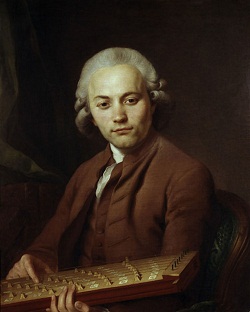Basic Info
Title: Spring Symphony (Frühlingssinfonie)
Genre: Biography, Music
Country: Germany
Language: German
Running time: 103 minutes
Release date: 8 April 1983
Staff
Director: Peter Schamoni
Producer: Wolfgang Hammerschmidt, Ralph T. Niemeyer, Peter
Schamoni
Screenplay by: Peter Schamoni
Music: Herbert Grönemeyer
Cinematography: Gérard Vandenberg
Edited by: Elfie Tillack
Cast
Nastassja
Kinski as Clara Wieck
Herbert
Grönemeyer as Robert Schumann
Rolf
Hoppe as Friedrich Wieck
Summary
"Spring Symphony" is a 1983 West German historical drama film directed by Peter Schamoni and starring Nastassja Kinski, Herbert Grönemeyer, and Rolf Hoppe. The film portrays the life of the pianist Clara Wieck and her relationship with the composer Robert Schumann. The film's sets were designed by the art director Alfred Hirschmeier. It was shot at the Tempelhof Studios in Berlin and in various places in Saxony including Dresden, Leipzig and Zwickau.
Movie Review
“Stunning film about Clara Wieck”
“A Romance in Music”
“Subtitles would have been a plus”
“An apathetic vision of a mad love”
Clara Wieck
Clara
Josephine Schumann (Clara Wieck) was a German pianist, composer and piano
teacher, born on September 13, 1819 and died on May 20, 1896. Regarded as one
of the most famous pianists of the Romantic era, she changed the format and
repertoire of the piano recital from displays of virtuosity to programs of
serious works. Exercising her influence over a 61-year concert career, she also
composed a variety of works, including solo piano pieces, a piano concerto,
chamber music, and choral pieces.
She grew up in Leipzig, where her father, Friedrich Wieck, was a professional pianist and teacher, and her mother was an accomplished singer. Having received a musical training from her father, she was a child prodigy and she began touring at the age of 11, where she achieved success in several cities, including Paris and Vienna.
 |
| Friedrich Wieck |
She married composer Robert Schumann, and they had eight children.
 |
| Clara and Robert Schumann |
They maintained a close relationship with Johannes Brahms, and
she publicly premiered many works by her husband Schumann and Brahms.
 |
| Johannes Brahms |
After Schumann's early death, she continued her concert tours in Europe for decades with the violinist Joseph Joachim and other chamber musicians.
 |
| Joseph Joachim and Clara Schumann, Adolph Menzel |
Although she died in Frankfurt, she was buried beside her husband in Bonn.
 |
| Robert & Clara Schumann's Grave |
Thank
you.































